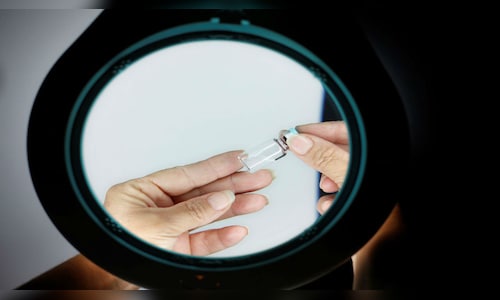The Silent Invasion: How Microplastics Are Impacting Your Health - And What You Can Do

What Are Microplastics, Exactly?
Microplastics are tiny plastic particles, less than 5mm in size. They originate from a variety of sources, including the breakdown of larger plastic items (like plastic bags and bottles), synthetic textiles (shed during washing), and microbeads found in some personal care products. They're virtually everywhere - in our oceans, soil, air, and, increasingly, in our bodies.
Where Are They Found in Our Bodies?
The discovery of microplastics in human bones is a particularly concerning development. Previous research has already identified them in lung tissue, blood, and placenta. Studies have shown microplastics can cross the placental barrier, exposing developing foetuses. They’ve been found in the digestive system, indicating ingestion is a primary route of exposure. The specific mechanisms by which they accumulate in different tissues are still being investigated, but it's clear their presence is widespread.
The Potential Health Impacts
While research is ongoing, the potential health impacts of microplastic exposure are a growing concern. Here's a breakdown of what scientists are investigating:
- Inflammation & Oxidative Stress: Microplastics can trigger inflammatory responses in the body and contribute to oxidative stress, damaging cells and tissues.
- Chemical Exposure: Plastics often contain additives like phthalates and BPA, which can leach into the body once ingested. These chemicals are known endocrine disruptors and have been linked to various health problems.
- Physical Damage: The sharp edges of microplastics can potentially cause physical damage to tissues, particularly within the digestive system.
- Immune System Effects: Some research suggests microplastics can affect the immune system, potentially leading to allergic reactions or autoimmune disorders.
- Disruption of Gut Microbiome: The gut microbiome plays a crucial role in overall health. Microplastics can disrupt the balance of beneficial bacteria, potentially leading to digestive issues and other health problems.
Minimising Your Exposure
While completely eliminating microplastic exposure is impossible, there are steps you can take to reduce your risk:
- Filter Your Water: Use a high-quality water filter that removes microplastics.
- Choose Natural Fabrics: Opt for clothing made from natural fibres like cotton, linen, and wool, which shed fewer microplastics than synthetic fabrics.
- Wash Clothes Less Frequently: Reduce the number of times you wash synthetic clothing. Use a laundry bag designed to capture microplastics.
- Reduce Plastic Consumption: Choose reusable alternatives to single-use plastics whenever possible.
- Be Mindful of Seafood: While the risk is still being assessed, consider limiting your consumption of seafood from areas known to be heavily polluted.
The Future of Research
Research into the health effects of microplastics is rapidly evolving. Scientists are working to better understand the long-term consequences of exposure, identify the most vulnerable populations, and develop effective strategies for mitigating the risks. The silent invasion of microplastics is a global challenge, and continued research and proactive measures are essential to protecting our health and the health of future generations.






